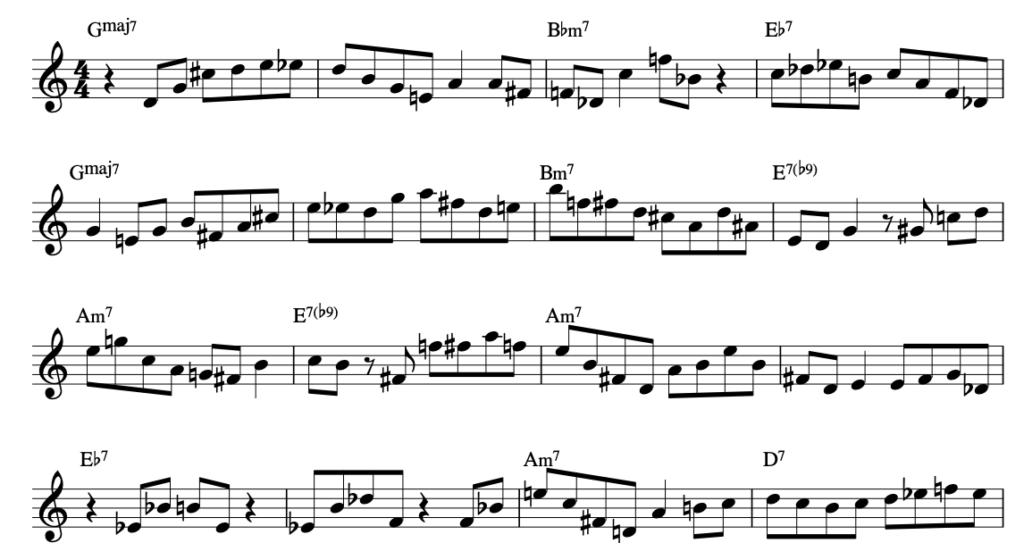
One of my favorite harmonic forms to improvise over (as well as to hear other musicians improvise over) is the well-worn jazz standard, “Out of Nowhere”. It just seems to be one of those songs that inspires creatively melodic improvisation. It has a beautifully symmetrical form, and the sharp harmonic/tonal contrasts emphasize this symmetry. It is for this reason that I decided to use this form to compose a solo that is purposefully “non-symmetrical”, yet still captures the essence of the time/harmonic form.
Mostly, this is a study in polymeter. There are numerous instances of 3/4 over 4/4. For example, take a look at the last two beats of measure 12 in the example above. This four-note eighth note pattern gets slightly altered tonally, then displaced by a quarter rest going into measures 13 and 14, creating a phrase sequence that implies this 3/4 over 4/4 polymetric tension.
There are other polymetric events throughout this etude, as well (including 5/4 over 4/4), for you to experience and analyze. Also, I occasionally use both suspension and/or anticipation of harmonic cadences to support the polymetric assymetry, creating lots of “over-the-bar” phrases.
And there is a nice rhythmic surprise (an implied metric/tempo modulation, via eighth-note triplets) in measures 45 through 48:

I’ve suggested a tempo for this particular etude (quarter note equals 132) mostly because I thought the contrasts between the eighth notes and triplets work optimally around that tempo, more or less. I suggest you practice this with the metronome in two ways: First with the click only on the first beat of each measure. Next, with the the click only on the second beat (back beat) of each measure. Both ways will give you a clearer feeling of the metric and rhythmic dissonance. Also, playing this over a backing track could really help you internalize the asymmetrical phrasing qualities as you hear them over the chord changes.
If you’d like to explore this concept further, please consider taking a look at my e-books, Essential Polymeter Studies in 4/4 for the Improvising Musician, and Rhythmic Dissonance. For a free, downloadable pdf of this etude, click the link below: